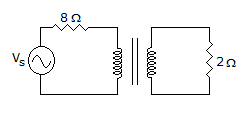Electronics and Communication Engineering - Analog Electronics
Exercise : Analog Electronics - Section 4
- Analog Electronics - Section 11
- Analog Electronics - Section 21
- Analog Electronics - Section 20
- Analog Electronics - Section 19
- Analog Electronics - Section 18
- Analog Electronics - Section 17
- Analog Electronics - Section 16
- Analog Electronics - Section 15
- Analog Electronics - Section 14
- Analog Electronics - Section 13
- Analog Electronics - Section 12
- Analog Electronics - Section 1
- Analog Electronics - Section 10
- Analog Electronics - Section 9
- Analog Electronics - Section 8
- Analog Electronics - Section 7
- Analog Electronics - Section 6
- Analog Electronics - Section 5
- Analog Electronics - Section 4
- Analog Electronics - Section 3
- Analog Electronics - Section 2
41.
An amplifier has open loop gain of 100, input impedance 1 kΩ and output impedance 100 Ω. If negative feedback with β = 0.99 is used, the new input and output impedances are
Answer: Option
Explanation:
Input impedance with feedback = (1 kΩ) (1 + 100 + 0.99) = 100 kΩ. Output impedance with feedback =  .
.
42.
In a BJT amplifier the power gain from base to collector is 4000. The power gain in dB is
Answer: Option
Explanation:
Gain in dB = 10 log (4000).
43.
In figure, secondary winding has 40 turns. For maximum power transformer to 2 ohm resistance the number of turns in primary is


Answer: Option
Explanation:
 .
.
44.
In a CE amplifier circuit the dc voltage between emitter and ground
Answer: Option
Explanation:
Since dc is flowing through emitter resistance, dc voltage cannot be zero.
45.
A buffer amplifier should have
Answer: Option
Explanation:
So that it can couple high impedance source to low impedance load and maximum power can be transferred.
Quick links
Quantitative Aptitude
Verbal (English)
Reasoning
Programming
Interview
Placement Papers